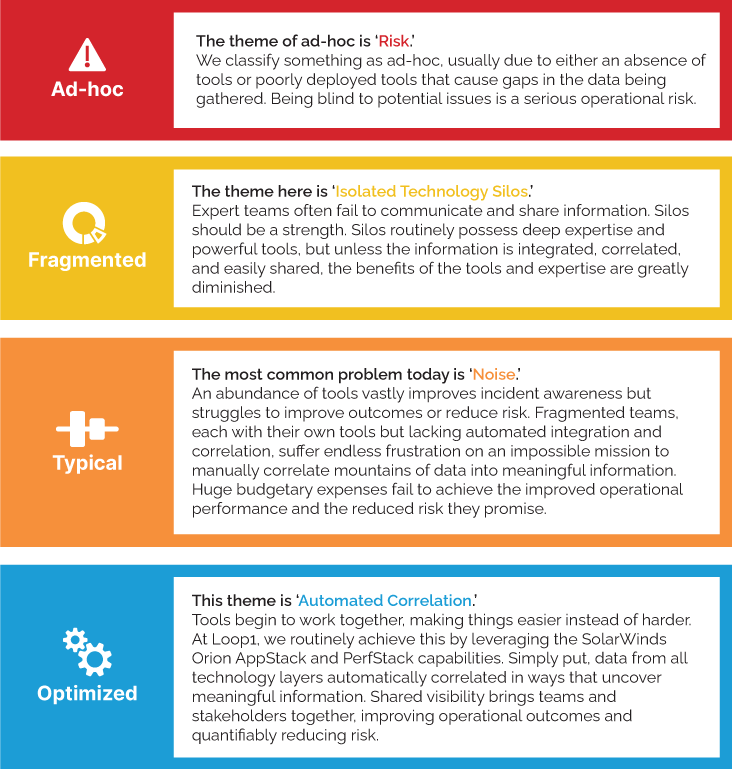My twenty-year technology career has been nearly evenly split between working for software development companies and providing professional services and training to software buyers and users.
Earlier in my career, the bulk of my work involved designing and deploying new technologies and included building modern networks and datacenters. It was a fast-paced era that featured revolutionary changes to fundamental IT operations, ranging from the introduction of Active Directory to replacing slower ethernet networks with modern high-speed multi-gigabit networks.
Over the last ten years, the conversation has shifted from building next-generation deployments to the continual optimization of environments in more incremental ways. Without question, the most disruptive aspect of the last ten years has been the advent of hybrid cloud. Still, even that rapid migration has now evolved into a phase of operational optimization.
At Loop1, we express the continuous process of optimization as an exercise in IT operations maturity. Specifically, we have developed the Loop1 Monitoring Maturity Model (L1M3—pronounced ‘lime’) as our model for ensuring that monitoring and observability tools are deployed optimally to facilitate continuous improvements to IT operations and business outcomes.
IT tools themselves have evolved dramatically over the years as well. Observability tools, emphasizing distributed tracing and cloud application support, are merging with monitoring tools that have long emphasized gathering metrics. Both combine with log management tools that span and blur the lines between observability and monitoring.
Despite robust discussions around the two terms, a fundamental truth exists: Monitoring is the foundation of observability.
L1M3 likewise spans monitoring, observability, as well as service management. L1M3 consists of three primary components. Our Assessment Grid, the Five Phases of Maturity, and our Six Assessment Areas.
In this post, we’ll focus on the theme for each of the Five Phases of Maturity:




Of course, some will say that a genuinely mature IT operations environment will also provide self-healing and auto-remediation of detected issues. I have not seen that capability widely practiced or adopted yet. In my experience, organizations don’t yet have enough trust in their tools to adopt widespread automatic remediation. Automation and orchestration absolutely exist, but in my experience, they still focus primarily on provisioning and updating and less on detecting and correcting conditions.
So, that concludes Part 1 of this two-part post. In Part 2, I will describe the Six Assessment Areas and methods to help measure and improve IT operations maturity. We will look at how to determine where you are now and what steps, tools, and processes you can design, deploy, and adopt to move from less mature to more mature (or in L1M3 terms—from Ad-hoc to Insightful!).










